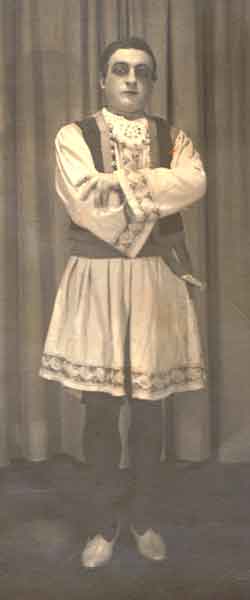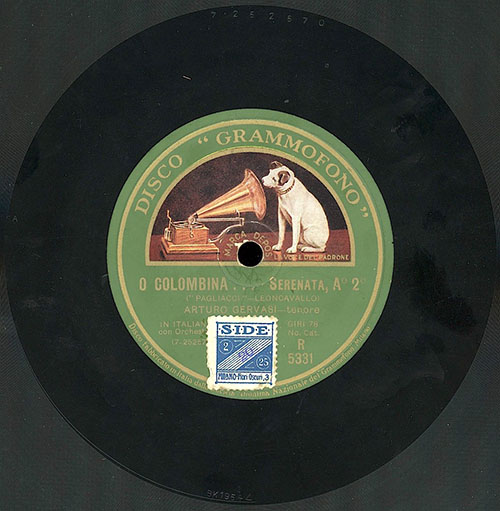His father was a public health officer and well-off, but died in 1905, leaving Arturo Gervasi, his brother and his mother without any
earnings, and in sudden poverty. Arturo, the elder of the two brothers, decided to leave for the USA in 1907, to live with relatives.
After sustaining himself with low-wage immigrant jobs for a while, he could study voice at a musical college, with the help of his
American family. He graduated, and started singing comprimario roles at smaller theaters in the New York area (he lived in Yonkers).
In some way, he established himself as a singer, although details are sketchy at best. One source says he stepped in for a sick tenor in
a main role "at an important theater in New York", without specifying venue, date or role; Roberto Marcocci says Gervasi became
successful as a concert singer. The US newspapers don't say anything, mostly: mentions of Gervasi are scarce, to put it mildly – a
handful of concert appearances, and that's it. At least from 1928, he definitely sang on the radio, and he interpreted the title song in
the 1932 film (shot in New York, but in Italian) "Parigi affascina, ovvero Malavita". Rumors that he sang throughout the US as well as in
Argentina, Brazil and Mexico can hardly be taken seriously since they come from the same source that has him sing at the Met with
Caruso. (He never sang there, neither with nor without Caruso.)
At that time, he used to go back and forth between the US and Italy. In Italy, his career was obviously better than in America: he sang
at the Teatro Quirino in Rome in 1924, in Cosenza and Torino (Politeama Chiarella) in 1925, at no less a theater than the Carcano in
Milano in 1926, as well as at the Balbo in Torino; in 1927, he was in Biella, and in Rome again, this time at the Teatro Adriano. Roles
he impersonated were Enzo Grimaldo, Rodolfo, Edgardo, Alfredo and Pinkerton.
He returned to Italy for good after World War II; he first lived in Rome, then returned to his native Vignanello in 1976, and eventually
died in a nursing home in complete poverty.
Picture source and reference 1; reference 2: the fantastic website
of Roberto Marcocci; reference 3: New York Tribune, 10 April 1922; reference 7:
Washington Times, 10 May 1928; Indianapolis Times, 10 May 1928

